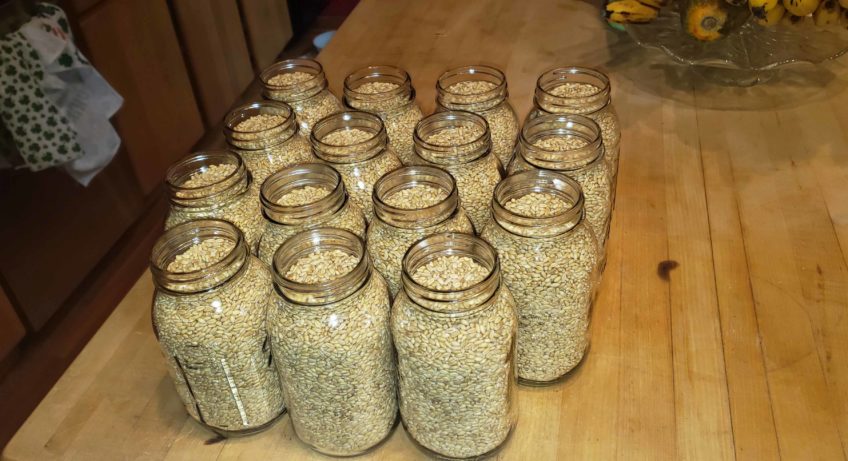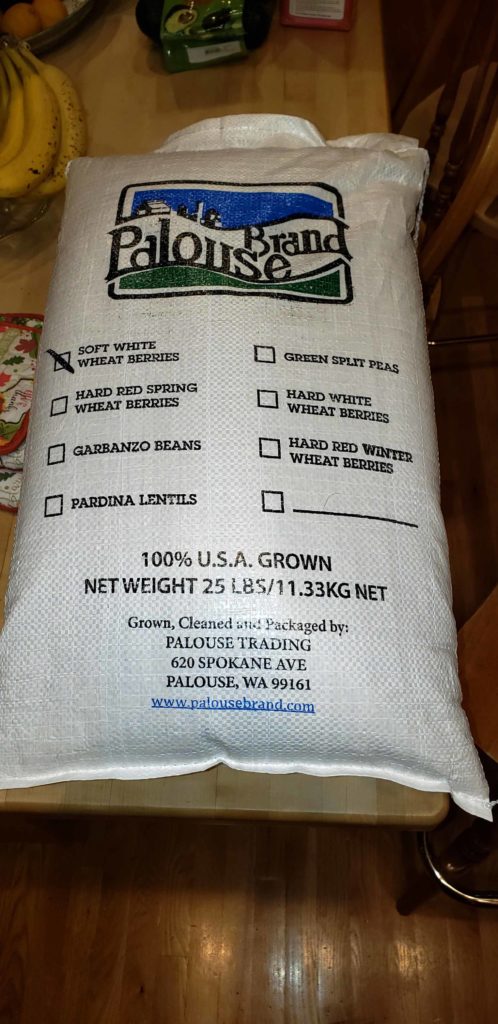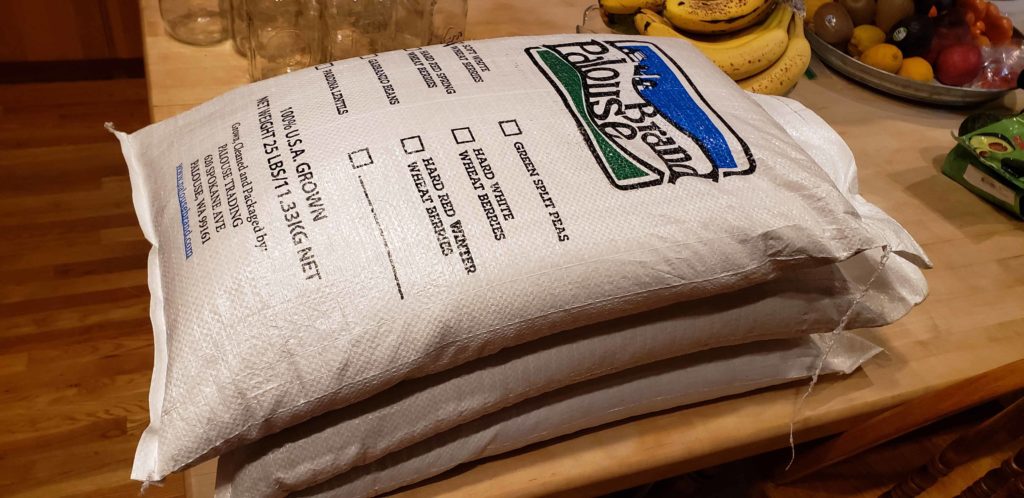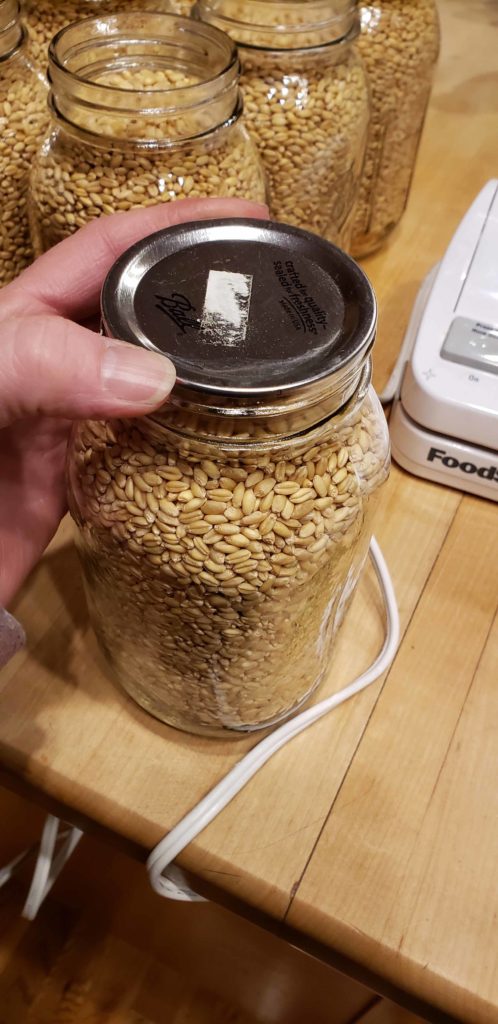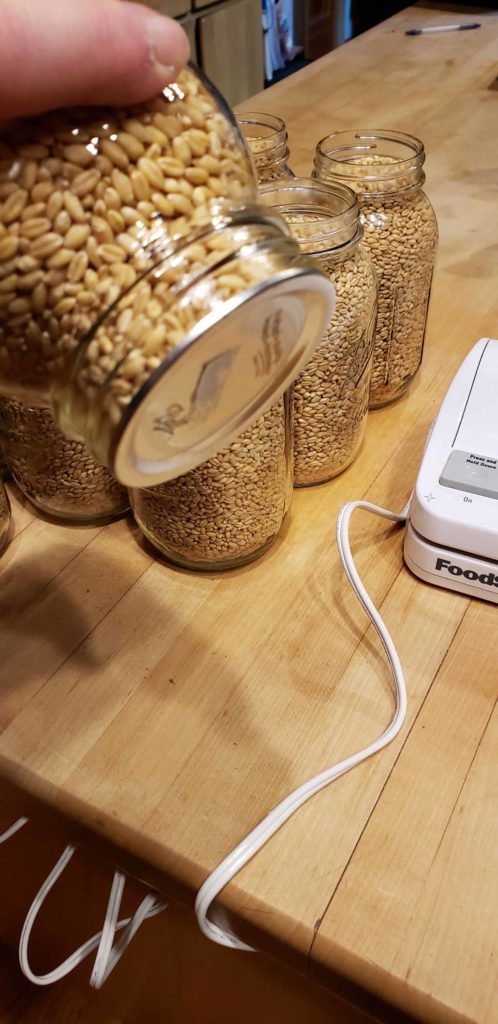In this current state of affairs, I thought it prudent to get back into making my own bread. I love homemade bread. I was raised on it. I love when I make it. It tastes delicious.
Your options are many as far as flavors and ingredients. You really can’t go wrong with anything you choose to put into homemade bread.
I suspected there would be a bit of an issue with purchasing flour at some point. To get ahead of the situation for my home, I decided to purchase some wheat berries. I have done this in the past but not having a bunch of mouths to feed at my house any longer, it has not been a priority. Fresh whole grains will last a LONG time if stored correctly and fresh bread baked with fresh milled grains can’t be beat.
I bought 25 pounds each of whole organic soft white wheat berries, hard white wheat berries, and hard red spring wheat berries. I purchased them online through Amazon from a company called Palouse Brand (www.palousebrand.com).
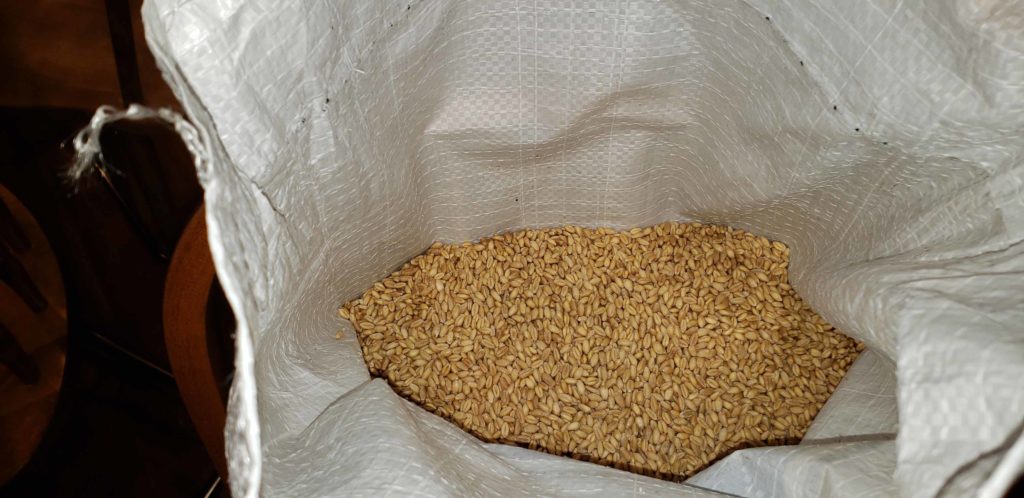
I decided to store the grains in quart mason jars, sealed with my Foodsaver vacuum sealer jar attachment.
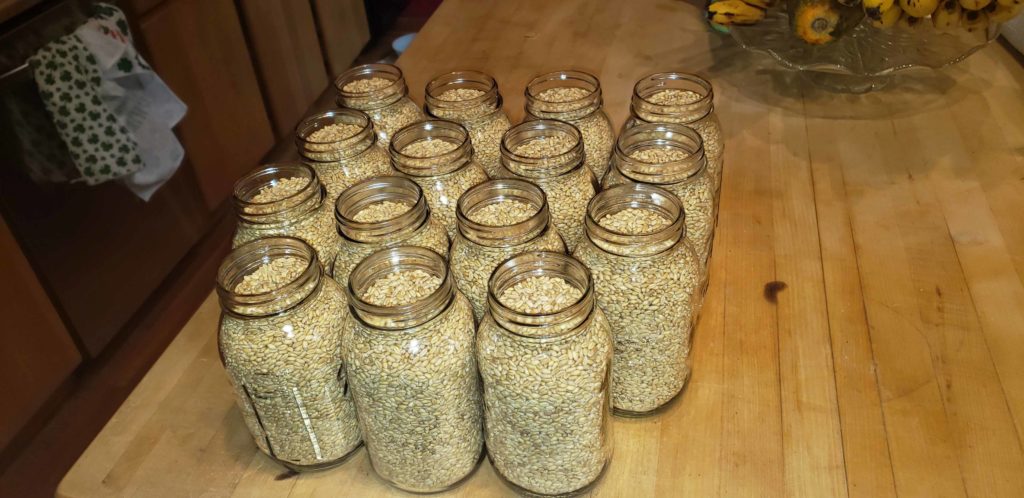
If you are unfamiliar with the Foodsaver jar attachment, it is a lid coupler that comes in both regular and wide mouth size for mason jar lids. It fits over the top of the lid on the jar. It connects to the Foodsaver with a plastic tube. When the button is depressed on the Foodsaver which would normally seal a bag, the air is pulled from the jar and the lid is sucked down and sealed to the jar. Please note that this is NOT an alternative to canning. This does NOT destroy any bacteria that may be in the food you are canning. It is, however, a great way to create an air-tight seal to extend the life of your food.
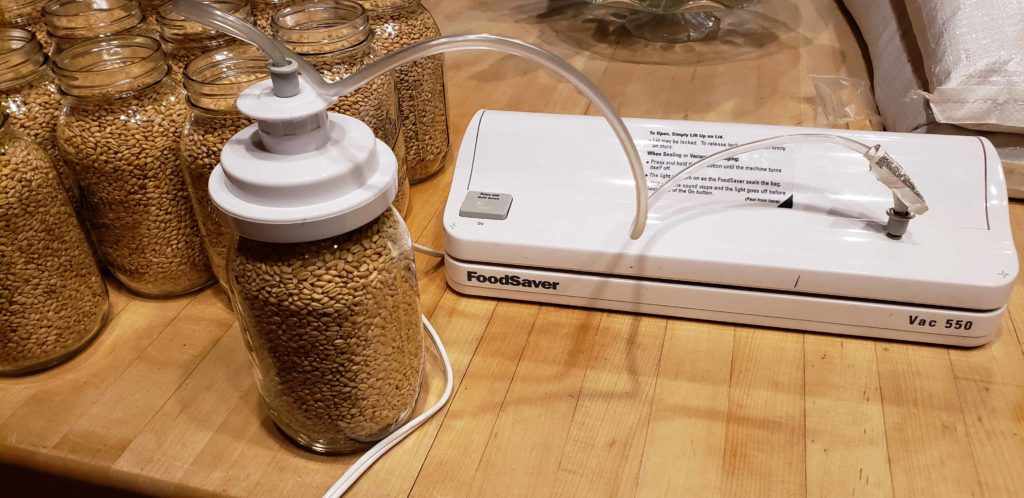
It is a great way to seal and store cereal, nuts and seeds, whole grains, crackers, cookies, candies, etc.
I chose quart size jars due to the fact that a bread recipe generally uses about 3-4 cups of flour. A quart jar holds 2 cups of wheat berries and once ground will equal approximately 4 cups of flour. That is perfect for a loaf of bread and I then don’t need to re-seal the jar or end up with an abundance of ground flour that I am not quite ready to use.
It is best to grind your berries as you need them so as to not lose vital nutrients from the flour if it is not used right way. If you end up in a position with more ground flour then you need at the moment, just put it in a sealed container stored in a cool dry location and use it up as soon you can. It is not that detrimental, I just don’t like to have multiple jars of pre-ground berries hanging around. Personal preference.
I have a hand crank grain mill. So I – or whoever is with me at the time – will be getting some hopefully much needed arm exercises in – while we grind the grain for whatever I choose to bake that day.
There are some seemingly awesome electric grain mills out there. Grinding grain by hand is an endeavor. It is nice to be able to use it in a powerless situation but it takes some endurance. A powered option would be a welcome change when those arms are tired.
I put the jar rings on each jar loosely just to hold the seal on if it were to come unsealed.
I printed labels on the computer as to which berries and the month and year I sealed them up.
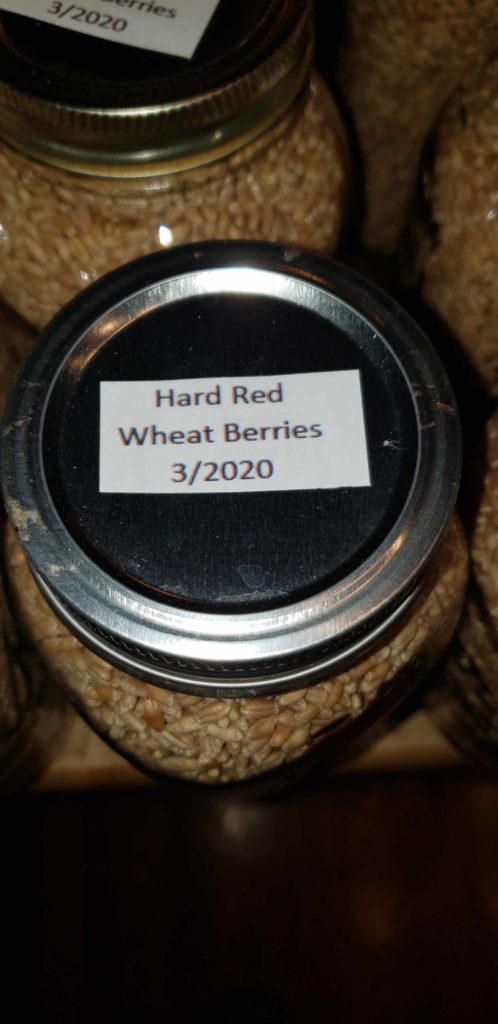
There are my jars. For each 25 pounds of berries, I ended up with 15 quart jars.
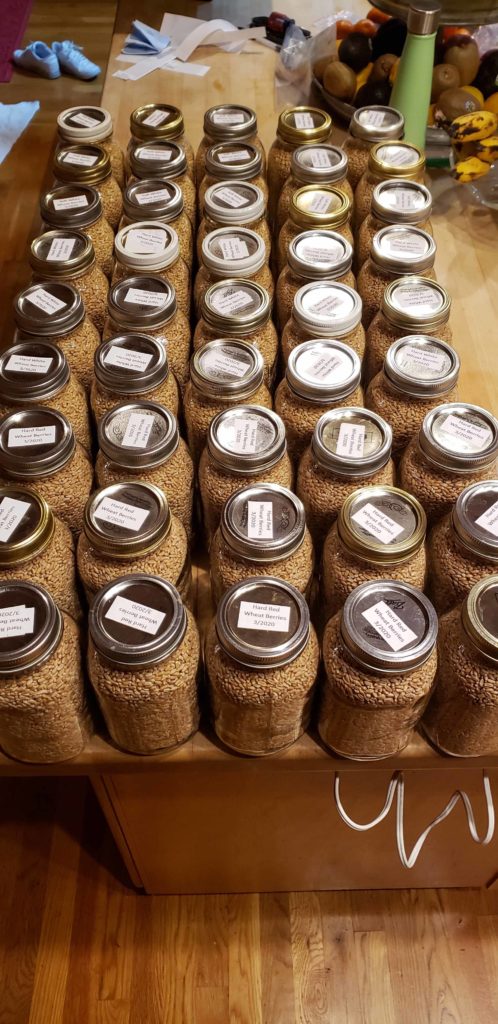
I will store them in my pantry which is always cool and dark.
So what is the difference between the different berries?
I will quote what Palouse Brands has to say on their website:
“Hard White Wheat Berries vs Soft White Wheat Berries:
Hard White wheat has a beautiful golden color and mild, nutty flavor. The main difference between the two is protein content. The soft white wheat has an average protein content of around 12%; soft white wheat flour is best suited for recipes that are leavened with baking powder or baking soda. While whole wheat flour made from hard white berries is better suited for recipes leavened with yeast.
Hard Red Wheat Berries vs Hard White Wheat Berries:
Whole wheat flour made from hard red wheat berries, gives you that iconic whole wheat taste and color. While whole wheat flour from hard white berries will produce a whole wheat product that almost looks like it was made from processed white flour. Bread made from these whole wheat flours will have more fiber and be slightly denser than bread made from processed flours because they contain the whole bran.
Hard Red Spring Wheat vs Hard Red Winter Wheat:
The whole wheat flour from both of these wheat berries will give you the traditional whole wheat flour color, flavor, and nutrition. The main difference between these two wheat berries is the protein content. The hard red spring wheat berry has a protein content of around 14% making it ideal for bread and baked goods leavened with yeast. Whole wheat flour from hard red winter wheat berries has a lower protein content of 11%, and produces more artisan-style bread and can also be used in recipes that are leavened with baking powder and soda.”
So there are the differences.
I am excited to experiment with these berries as I have never purchased them from this source. I am sure they will taste similar to berries purchased from other sources, but it is always fun to taste the final result. I will definitely bring you along when I do. Wheat berries are used for many different things besides bread and baked goods. If you want more information, go to Palouse Brand’s web site (www.palousebrand.com) and check them out. There is a ton of information there as well as multiple other sources if you do a google search.
Now to find a spot on my shelves for all of these jars.
Have you ever ground your own wheat berries? How about making your own bread?

